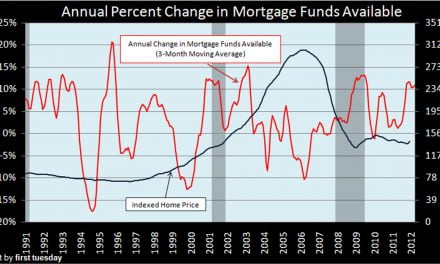Fannie Mae and Freddie Mac (Frannie) have answered the cry of lenders to reduce the risk of buy-backs. Buy-backs, also known as put-backs, occur when Frannie requires the lender to repurchase a loan it made which contains underwriting flaws.
Under recently revised Frannie rules, buy-backs on loans originated on and after January 1, 2013 will have more stipulations regarding:
- under what circumstances Frannie may force a lender to buy back the shoddy loan; and
- how lenders can better screen for a loan’s buy-back risk before it is sold on the secondary market.
Changes include:
- loans with 36 months of consecutive, on-time payments are exempt from buy-backs;
- Home Affordable Refinance Program (HARP) loans are exempt from buy-backs after 12 months of acceptable payment history following Frannie’s acquisition date;
- Frannie will review loans for buy-back potential within 30 – 120 days after acquisition;
- Frannie will give lenders a comprehensive basis to evaluate loans for buy-back potential; and
- Frannie also promises lenders a more transparent appeals process for disputed buy-backs.
Proponents of the changes claim the new rules will help lenders feel more confident and prompt them to originate loans to more eligible buyers. Presently, lenders say their lending standards are uniformly strict for fear of buy-backs.
In the first two quarters of 2012 alone, Frannie has conducted buy-backs on mortgages totaling $18.9 billion. It is estimated that lenders end up paying about half of the amount bought back for each transaction, leaving taxpayers to make up for the rest.
first tuesday insight
Frannie is going easier on lenders. Why does this feel like a bad thing?
Lenders developed unhealthy frat-house binge habits during the Millennium Boom. They made all sorts of underwriting errors willfully, and in the process pushed loans through too quickly and with minimal review. They happily gave a loan to anyone who walked in their front door who simply had the ability to ask and sign an application. These practices contributed to the eventual bust, of which we’re recovering today and will be for at least a decade.
Frannie has since required lenders to repurchase these “bad apple” faulty loans, causing lenders to adjust their underwriting methods and buyer standards (and profits) in the process. Lenders have to get it right, or they themselves pay the price.
Now, with this change of protocol, Frannie is allowing lenders the opportunity to return to their old ways and make hastier loans with less fear of being called on it. Let the wine of Bacchus pour once again!
Related articles:
Further, as home prices begin to increase in response to the Federal Reserve’s (the Fed’s) latest stimulus plans to drop mortgage rates with a third round of quantitative easing (QE3), buyers will be sitting pretty throughout the duration of the Fed’s stimulus (likely through 2015).
However, once rates begin increasing again, as they inevitable will, home prices will drop back to their historical mean price, leaving those who purchased during the coming years in a negative equity situation if they put little down. Having made their payments on time for three years before dropping underwater, their loans will be exempt from Frannie’s buy-back rules – great for the lender, but very bad for the taxpayer once these newly underwater homeowners begin defaulting.
Related articles:
Frannie is doing its best to offer lenders some confidence so they will start lending to more qualified buyers, which is commendable. Making buy-back rules more transparent is also a plus.
However, Frannie making lenders a guarantee based on several months of consecutive on-time payments is unwise and shortsighted. In three years time, there will be a whole new slew of negative equity homeowners (albeit to a lesser degree), and the potential for default (resulting in Frannie losses and you, the taxpayer) will be high.
Sometimes we wonder if anyone in Washington ever talks to each other. A simple conversation between Fed Chairman Bernanke-the-Cool and acting Director of the Federal Housing Finance Agency (FHFA) Demarco-the-Arrogant would go a long way towards mitigating these foolish and unfortunate inconsistencies in policy. The writing is on the wall; it just takes someone who is willing to learn to read and synthesize.
We would like to take this opportunity to echo Nobel laureate Paul Krugman once again: fire DeMarco now.
Re: Mortgage Putback Threat Reduced for Lenders Under New Rules from Bloomberg and FHFA, Fannie Mae and Freddie Mac Launch New Representation and Warranty Framework: Increased Transparency and Certainty for Lenders from the Federal Housing Finance Agency



















